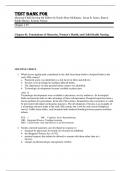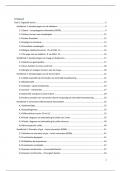Exam (elaborations)
Test Bank For Maternal-Child Nursing 6th Edition by Emily Slone McKinney, Susan R. James, Sharon Smith Murray, Kristine Nelson Chapter 1-55
- Course
- Institution
- Book
Test Bank For Maternal-Child Nursing 6th Edition by Emily Slone McKinney, Susan R. James, Sharon Smith Murray, Kristine Nelson Chapter 1-55
[Show more]




